In a small area of Ximending bounded by cinemas, the Danshui River and a strip of karaoke bars and hotels, are lanes and alleys that cater to hip-hop crews and consumers of Asian fashion. It is a lively section of Taipei, with rehearsal spaces for bands and film workshops, mixed with vendors and by-the-hour hotels. There are hundreds of places to eat and all-night cafes.
Taking a stroll and probably getting lost is not a bad way to kill some time if it involves lunch or dinner and a break for coffee. On the way you'll see a hoard of graffiti. It's not unlike taking a stroll through a contemporary art gallery's exhibition of ghetto artists. Among the prominent artists, there is the sublime Arnold -- who is rumored to be doing his military service -- and Ragdoll. Tags are in Chinese and English. The boom-box greetings of the competing storeowners are the rhythm of the streets, with a half-abandoned car spray-painted with the terse statement: Fuck Nike.
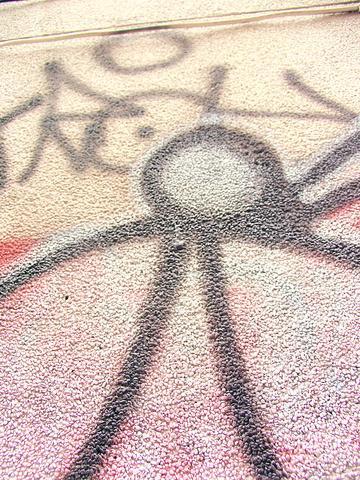
PHOTO: JULES QUARTLY, TAIPEI TIMES
Though papers reported gangland street fights over drugs a few years back, Ximending is now heavily patrolled and has a lot of closed circuit TV cameras mounted on streetlamps.
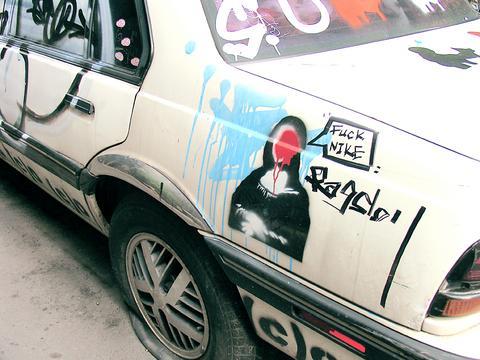
PHOTO: JULES QUARTLY, TAIPEI TIMES
It feels like a peaceful, sub-tropical urban jungle. At night there are 24-hour tea and coffee houses, bowling alleys, PC game places and arcades. There are a few nightclubs and many karaoke and red-envelope bars (so called because men pay for a song with a red envelope containing money). At dawn, the clientele and hostesses from the piano bars on Chengdu Road spill out into the street and toward the line of yellow taxis.
Originally a public burial ground when it was first developed in 1885, Ximending's name derives from being one of the five gates of Taipei. It was an entertainment district developed by the Japanese in the first half of the century and flourished in the1950s and 1960s, when it first became a fashionable hotspot for the prospering Chinese Nationalist Party soldiers and locals.
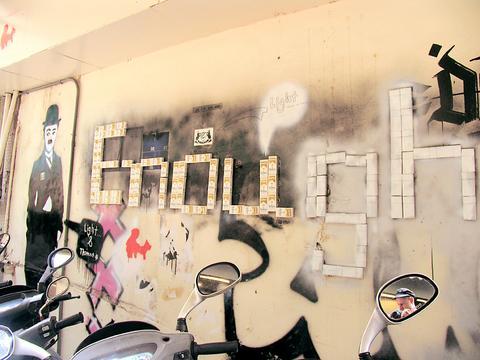
PHOTO: JULES QUARTLY, TAIPEI TIMES
Japan is back now, at least when it comes to fashion. Young women wear minutely planned and accessorized looks inspired by manga comic characters. They wear shorts and layers of long colorful socks with flat sandals or boots. The guys are a mixed bunch of shorts, cargo pants, baggy jeans, extra-large clothing, hats and shades.
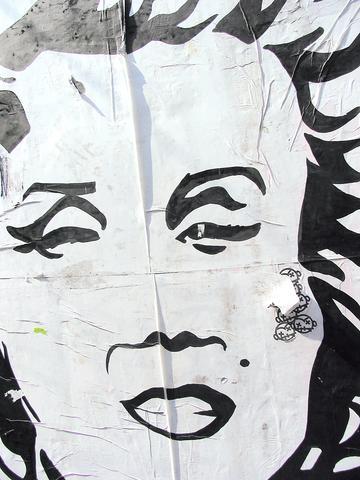
PHOTO: JULES QUARTLY, TAIPEI TIMES
Ohtomo (大
Mao (毛

PHOTO: JULES QUARTLY, TAIPEI TIMES
They both say business is good.
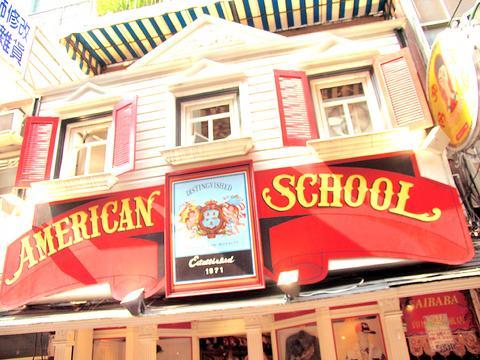
PHOTO: JULES QUARTLY, TAIPEI TIMES
At Doobiest, on Wuchang Street, many of the clothes and accessories are from the US, with labels like Tribal USA and Dickies. The Denon turntables are prominently displayed, but a CD plays in the background. XXXL shirts and pants are being sold to the guys, hot pants for the ladies. There is an Apple computer and 12-inch records. At another hip-hop store nearby, kids admire a custom-made low-rider bike with high handlebars and chrome accessories.
Down on Emei Street are some large works of graffiti, more stores with names like Pinky, Mother Fucker, K.O.S (king of the streets) and Vicious. They aim for the broad spectrum of punk-death metal combinations, soul, R 'n' B and US skateboarder styles. A little further and the hip-hop boutiques make way for hotels, karaoke parlors and all-night fried rice and noodle diners that always seem to have a little sashimi and a lot of Taiwan Beer.

Nine Taiwanese nervously stand on an observation platform at Tokyo’s Haneda International Airport. It’s 9:20am on March 27, 1968, and they are awaiting the arrival of Liu Wen-ching (柳文卿), who is about to be deported back to Taiwan where he faces possible execution for his independence activities. As he is removed from a minibus, a tenth activist, Dai Tian-chao (戴天昭), jumps out of his hiding place and attacks the immigration officials — the nine other activists in tow — while urging Liu to make a run for it. But he’s pinned to the ground. Amid the commotion, Liu tries to

The slashing of the government’s proposed budget by the two China-aligned parties in the legislature, the Chinese Nationalist Party (KMT) and Taiwan People’s Party (TPP), has apparently resulted in blowback from the US. On the recent junket to US President Donald Trump’s inauguration, KMT legislators reported that they were confronted by US officials and congressmen angered at the cuts to the defense budget. The United Daily News (UDN), the longtime KMT party paper, now KMT-aligned media, responded to US anger by blaming the foreign media. Its regular column, the Cold Eye Collection (冷眼集), attacked the international media last month in

Feb. 10 to Feb. 16 More than three decades after penning the iconic High Green Mountains (高山青), a frail Teng Yu-ping (鄧禹平) finally visited the verdant peaks and blue streams of Alishan described in the lyrics. Often mistaken as an indigenous folk song, it was actually created in 1949 by Chinese filmmakers while shooting a scene for the movie Happenings in Alishan (阿里山風雲) in Taipei’s Beitou District (北投), recounts director Chang Ying (張英) in the 1999 book, Chang Ying’s Contributions to Taiwanese Cinema and Theater (打鑼三響包得行: 張英對台灣影劇的貢獻). The team was meant to return to China after filming, but

Power struggles are never pretty. Fortunately, Taiwan is a democracy so there is no blood in the streets, but there are volunteers collecting signatures to recall nearly half of the legislature. With the exceptions of the “September Strife” in 2013 and the Sunflower movement occupation of the Legislative Yuan and the aftermath in 2014, for 16 years the legislative and executive branches of government were relatively at peace because the ruling party also controlled the legislature. Now they are at war. The Democratic Progressive Party (DPP) holds the presidency and the Executive Yuan and the pan-blue coalition led by the